

Ausgewiesene Marken gehören ihren jeweiligen Eigentümern | Copyright © 2005-2026 Antje Schmidt
Webdesign Stephan Schmidt





LIVE CENTRALLY - ENJOY THE AMBIENCE
You
are
searching
for
a
quite
nice
vacation
rental
for
1
or
2
persons?
Therefore
we
can
offer
you
our
affectionately
renovated
old
house
holiday
home!
About
58
sqm
(630
sq.
ft.)
wide
with
a
living
room,
a
dining
room,
a
bedroom,
a
separate
completely
equipped
fitted
kitchen
with
washing
machine*
plus
laundry
dryer
(common),
micro-wave,
and
of
course
a
nice
bathroom
with tub & shower.
*(for a small fee)
In
addition
a
small
terrace
with
garden
furniture
and
a
marvellous view at the garden.
A
digital
satellite-TV-set
(Big
38
inch
Flat
screen),
W-LAN
internet
connection
and
a
nice
little
hi-fi-system
(cd,
tuner,
cassette)
are
placed
at
your
disposal.
For
your
bicycles
we
may
offer you your own external storage room.
Separate Entrance - Ground Floor



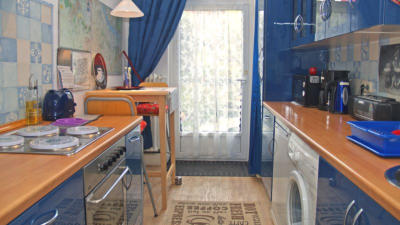
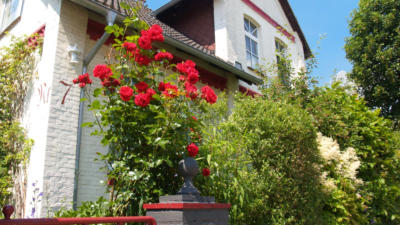
Distances:
Shopping facilities:
Train station/ Subway:
Restaurants:
Altes Land (Old Land):
Elberiver:
Ferry boat:
Stade:
Airport Hamburg:
Hamburg (City):
Lüneburg:
Cuxhaven:
0,5 km
0,8 km
1,0 km
2,0 km
10,0 km
10,0 km
21,0 km
35,0 km
37,0 km
60,0 km
90,0 km
<<<
<<<
<<<
<<<
<<<
<<<
<<<
<<<
<<<
<<<
<<<
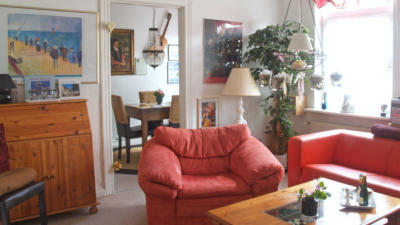
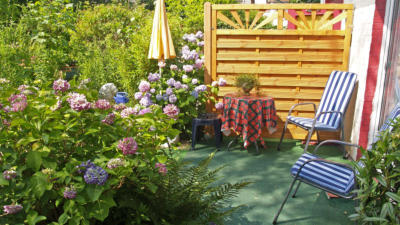
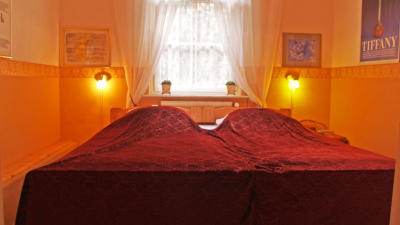
Antje Schmidt
Neue Straße 7
D - 21614 Buxtehude
Tel.: +49 4161/ 81950
mobile: +49 15140342939
Email: antje-schmidt-bux@web.de
Homepage: https://www.buxtehude-ferienwohnung.com

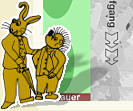



Buxtehude - Hanseatic city, adorable and cheerful!
Buxtehude
offers
you
comprehensive
possibilities
for
your
recreational
activities:
For
example
trips
to
the
historic
old
towns
of
Buxtehude
or
Stade,
to
the
"Old
Land"
(Altes
Land),
through
the
valley
of
the
river
Este (Estetal) and to the famous
The central area of Buxtehude
38,500
people
live
today
in
the
central
area
of
Buxtehude,
before
the
gates
of
Hamburg
and
on
the
outskirts
of
Altes
Land
with
its
b
e
a
u
t
i
f
u
l
,
blossoming
fruit
trees.
The
historical
old-
town
center
with
its
pedestrian
shopping
zone,
canal
facility,
moat,
Marschtor
military
lookout
post
and
beautiful
town
houses
is
a
special
attraction
for
visitors
from
far
and
near.
The
St.
Petri
Church
is
the
most
important
old-style
building;
a
three-stored,
gothic,
redbrick
basilica built around 1300 A.D.
Street
festivals
are
held
often
and
celebrated
with
great
enthusiasm
in
these
charming
surroundings.
The
“Old-Town
Festival”,
the
“Wine
Festival”
and
the
“Christmas
Market”
consistently
fill
the
streets
and
alleyways
with
merry-makers.
Cultural
life
is
indeed
very
much
alive
in
Buxtehude.
The
“Buxtehuder
Bulle”;
one
of
the
most
respected
literature
awards
for
young
people
and
the
Buxtehude
museum
for
regional
history
and
art
provide
strong
evidence of this.
"Heath
lands
of
Luneburg"
(Lüneburger
Heide).
Or
what
about
to
make
sometime
an
excursion
by
ferry
boat
at
the
Elbe
to
Blankenese,
to
the
famous
fish
market
(Fischmarkt)
or
to
the
St.
Pauli
landing
stages
in
Hamburg
(St.
Pauli
Landungsbrücken)?
Buxtehude,
with
its
healthy
mixture
of
industry
and
commerce,
can
be
proud
of
its
economic
achievements;
internationally
renown
names
such
as:
Babcock
Materials
Handling,
Bacardi,
K.I.D.
systems,
Malteser
Kreuz
Aquavit,
NSB
Niederelbe
Shipping
Company,
National
Rejectors,
Pioneer
Hi-Bred
and
the
Unilever
subsidiary
Lever
Fabergé
are
ample
proof
of
this.
All
in
all,
well-
over 15,000 people earn their living in Buxtehude.
Further
plus
points
for
Buxtehude
as
an
economic
base
include
its
University
of
Applied
Sciences
for
north-east
Niedersachsen
which
specializes
in
architecture,
real
estate
management
and
civil
engineering,
the
Technology-Center
which
offers
start-up
support
for
young
entrepreneurs,
and
a
number
of
highly-attractive
commercial
areas
near
the
center.
The
strong
performance
of
its
retail
outlets
in
the
historical
town
center
has
turned
Buxtehude
into
a
popular
spot
for
shopping
and tourism.



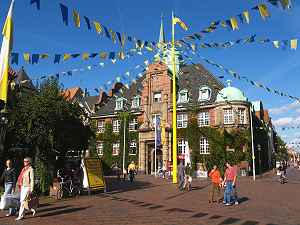
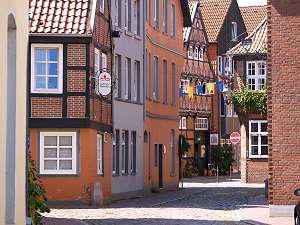
Hamburg
Hamburg
is
the
second-largest
city
in
Germany
(after
Berlin).
The
city is home to approximately 1.8 million people.
Culture and contemporary life:
Hamburg
offers
more
than
40
theatres,
60
museums
and
100
music
venues
and
clubs.
In
2005,
more
than
18
million
people
visited
concerts,
e
x
h
i
b
i
t
i
o
n
s
,
theatres,
cinemas,
museums,
and
other performances of cultural achievement.
Theatres:
The
state-owned
Deutsches
Schauspielhaus,
the
Thalia
Theater,
and
the
Kampnagel
are
well-known
theatres
in
Germany
and
abroad.
The
English
Theatre
near
U2
Mundsburg
station
was
established
in
1976
and
is
the
oldest
professional
English
speaking
theatre
in
Germany
having
exclusively
English
native
speaking
actors
in
its
staff.
Museums:
Art
Gallery
and
Gallery
of
Contemporary
Arts
(Kunsthalle
Hamburg)
is
located
near
central
station.
In
2008
the
Internationales
Maritimes
Museum
Hamburg
opened
in
the
HafenCity
quarter.
Two
museum
ships
near
Landungsbrücken
bear
witness
to
freight
ship
(Cap
San
Diego)
and
cargo sailing ship (Rickmer Rickmers) time.
Museum
BallinStadt
Emigration
City
reminds
of
the
vast
streams
of
European
people
emigrating
from
those
mass
accommodation
halls
between
1850
and
1939
to
North
and
South
America.
Those
people
from
overseas
stemming
from
emigrants
may
search
in
data
banks
for their ancestors.
Music:
Music
in
Hamburg
diversifies
from
classical
music
to
hip
hop,
heavy metal, and psychedelic trance music.
The
Hamburg
State
Opera
is
one
of
the
leading
German
opera
houses.
Its
orchestra
is
the
P
h
i
l
h
a
r
m
o
n
i
k
e
r
H
a
m
b
u
r
g
.
Hamburg's
other
orchestra
is
the
North
German
Radio
Symphony
Orchestra.
The
main
concert
venue
is
the
Laeiszhalle
Musikhalle
Hamburg,
pending
the
completion
of
the
Elbphilharmonie
Hamburg.
The
Laeiszhalle
is
the
home
of
the
Hamburger
Symphoniker.
Hamburg
was one city to take part in the Complaints Choir project.
Since
the
German
premiere
of
Cats
in
1985
there
are
always
a
number
of
musicals
being
played
in
the
city.
Among
them
have
been
Phantom
of
the
Opera,
The
Lion
King
or
Dirty
Dancing
(before
there
was
Dance
of
the
Vampires).
This
density,
which
is
the
highest
in
Germany,
is
partly
due
to
Germany's
major
musical
production
company
Stage
Entertainment
being
located
in
Hamburg.
One
of
the
musical
theatres
is
a
large
tent
in
the
harbour,
guests
either
arrive
by
boat
or
through the historic Old Elbe Tunnel.
Tourism:
Tourists
play
a
significant
role
in
the
city's
economy.
In
2007,
H
a
m
b
u
r
g
attracted
more
than
3,985,105
visitors
(+3.7%
to
2006)
with
7
,
4
0
2
,
4
2
3
o
v
e
r
n
i
g
h
t
a
c
c
o
m
m
o
d
a
t
i
o
n
s
(+3.1%).
More
than
700,000
people
from
abroad
were
visiting
for
an
average
duration
of
stay
of
2.1
days.
More
than
175,000
full-time
employees
and
a
revenue
of
€9.3
billion
make
the
tourism
industry
a
major
economic
factor
in
the
Hamburg
Metropolitan
Region.
Hamburg
has
one
of
the
fastest-growing
tourism
industries
in
Germany.
From
2001
to
2007,
the
overnight
stays
in
the
city
grew
about
55.2%
(Berlin
+52.7%,
M
e
c
k
l
e
n
b
u
r
g
-
W
e
s
t
e
r
n
Pomerania +33%).
A
typical
Hamburg
visit
includes
a
tour
of
the
city
hall
and
the
grand
church
St.
Michaelis
(called
the
Michel),
and
visiting
the
old
warehouse
district
(Speicherstadt)
and
the
harbour
promenade
(Landungs-brücken).
Sightseeing
buses
connect
these
points
of
interest.
As
Hamburg
is
one
of
the
world's
largest
harbours
many
visitors
take
one
of
the
harbour
and/or
canal
boat
tours
(Große
Hafenrundfahrt,
Fleetfahrt)
which
start
from
the
Landungsbrücken.
Major destinations also include museums.
Many
visitors
take
a
walk
in
the
evening
around
the
area
of
Reeperbahn
in
the
quarter
St.
Pauli,
considered
Europe's
largest
red
light
district
and
home
of
strip
clubs,
brothels,
bars
and
nightclubs.
The
singer
and
actor
Hans
Albers
is
strongly
associated
with
St.
Pauli,
providing
in
the
1940s
the
neighbourhood's
unofficial
anthem,
"Auf
der
Reeperbahn
Nachts
um
Halb
Eins."
The
song
explains
in
a
polite
way
how
a
sailor
enjoys
his
last
day
with
a
trollop before going aboard.
It
was
in
the
Reeperbahn
that
The
Beatles
began
their
career
with
a
48-night
residency
at
the
Indra
Club,
and
then
another
58
nights
at
the
Kaiserkeller,
in
1960,
the
Top
Ten
Club
(1961),
and
the
Star-Club
(1962).
Others
prefer
the
laidback
neighbourhood
Schanze
with
its
street
cafés
or
a
barbecue
on
one
of
the
beaches
along
the
river
Elbe.
Hamburg's
famous
zoo,
the
Tierpark
Hagenbeck,
was
founded
in
1907
by
Carl
Hagenbeck as the first zoo with moated, bar less enclosures.
People
may
visit
Hamburg
because
of
a
specific
interest,
notably
one
of
the
musicals,
a
sports
event,
a
congress
or
fair.
In
2005
the
average
visitor
spent
two
nights
in
Hamburg.
The
majority
of
visitors
come
from
Germany
(80%);
most
foreigners
are
E
u
r
o
p
e
a
n
,
especially
from
the
United
Kingdom
and
Switzerland,
and
the
largest
group
from
outside
Europe
comes
from
the
United
States.
Festivals and regular events:
Hamburg
is
noted
for
several
festivals
and
regular
events.
Some
of
them
are
street
festivals,
such
as
the
gay
pride
Christopher
Street
Day
festival
or
the
Alster
fair,
held
at
the
Binnenalster.
The
Hamburger
Dom
is
a
northern
Germany's
biggest
fun
fair
held
three
times
a
year.
Hafengeburtstag
is
a
funfair
to
honour
the
birthday
of
the
port
of
Hamburg
with
a
party
and
a
ship
parade.
The
biker's
divine
service
in
Saint
Michael's
Church
attracts
tens
of
thousands
biker.
Christmas
markets
in
December
were
held
among
other
locations
at
the
Hamburg
Rathaus
square.
For
art
and
culture
the
long
night
of
museums
offers
one
entrance
fee
for
about
40
museums
until
midnight.
In
2008
the
6th
festival
of
cultures
was
held
in
September,
to
celebrate
the
multi
cultural
life.
The
Filmfest
Hamburg—a
film
festival
originated
from
the
1950s
film
days
(German:
Film
Tage)
and
others—presents
a
wide
range
of
films.
The
Hamburg
Messe
and
Congress
offers
a
location
for
several
trade
fairs,
such
hanseboot,
an
international
boat
show,
or
Du
und
deine
Welt,
a
large
consumer
exhibition.
Regular
sports
events—some
open
to
pro
and
amateur
participants—are
the
cycling
competition
Vattenfall
Cyclassics,
Hamburg
Marathon,
the
biggest
marathon
in
Germany
after
Berlin,
the
tennis
tournament
Hamburg
Masters
and equestrian events like Deutsches Derby.
Architecture:
Hamburg
has
architecturally
significant
buildings
in
a
wide
range
of
styles.
There
are
only
a
few
skyscrapers.
Churches
like
St.
Nicholas's
church,
the
world
tallest
building
in
the
19th
century,
are
important
landmarks.
The
skyline
of
Hamburg
features
the
high
spires
of
the
principal
churches
(Hauptkirchen)
Saint
Michael's
Church
(nicknamed
“Michel"),
Saint
Peter's
Church,
Saint
James's
Church
and
Saint
Catherine's
Church
covered
with
copper plates.
The
many
canals
in
Hamburg
are
crossed
by
over
2300
bridges,
more
than
those
of
Amsterdam
and
Venice
combined.
Hamburg
has
more
bridges
inside
its
city
limits
than
any
other
city
in
the
world.
The
Köhlbrandbrücke,
Freihafen
Elbbrücken,
and
Lombards-brücke
and
K
e
n
n
e
d
y
b
r
ü
c
k
e
dividing
Binnenalster
from
Aussenalster
are
important
traffic
structures.
The
town
hall
is
a
richly
decorated
Neo-
Renaissance
building
finished
in
1897.
The
tower
is
112
metres
(367
ft.)
high.
Its
facade,
111
m
(364
ft.)
long,
depicts
the
emperors
of
the
Holy
Roman
Empire,
since
Hamburg
was,
as
a
Free
Imperial
City,
only
under
the
sovereignty
of
the
emperor.
The
Chilehaus,
a
brick
stone
office
building
built
in
1922
and
designed
by
architect
Fritz
Höger
is
spectacularly
shaped
like
an ocean liner.
To
be
completed
around
2016,
Europe's
largest
inner
city
development
as
of
2012,
the
quarter
HafenCity,
will
house
about
10,000
inhabitants
and
15,000
workers.
Its
ambitious
planning
and
architecture
(among
other
designs
by
Rem
Kolhaas
and
Renzo
Piano
will
be
realized)
are
slowly
coming
into
shape.
By
the
end
of
2016,
the
Elbe
Philharmonic
Hall
(Elbphilharmonie)
was
scheduled
to
house
its
first
concerts
in
a
spectacular
building
designed
by
the
Swiss firm Herzog & de Meuron on top of an old warehouse.
The
many
parks
of
Hamburg
are
distributed
over
the
whole
city,
which
makes
Hamburg
a
very
green
city.
The
biggest
parks
are
the
Stadtpark,
the
O
h
l
s
d
o
r
f
Cemetery
and
Planten
un
Blomen.
The
Stadtpark,
Hamburg's
"Central
Park",
has
a
great
lawn
and
a
huge
water
tower,
which
houses
one
of
Europe's
biggest
Planetariums.
The
park
and
its
buildings
were
also
designed
by
Fritz
Schumacher
in the 1910s.
Climate:
The
warmest
months
in
Hamburg
are
June,
July,
and
August,
with
mean
temperatures
of
19.9
to
22.2
°C
(67.8
to
72.0
°F).
The
coldest
are
December,
January,
and
February,
with
mean
temperatures
of
-
1.4 to 0.0 °C (29.5 to 32 °F).
Textquellen:
u.a.
aus
Wikipedia.
Wikipedia®
ist
eine
eingetragene
Marke
der
Wikimedia
Foundation
Inc.
http://de.wikipedia.org
|
Stadtinformation
der
Stadt
Buxtehude
http://www.buxtehude.de
/ Alle Rechte der Herausgeber vorbehalten.


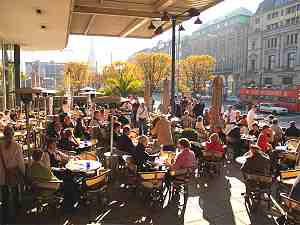
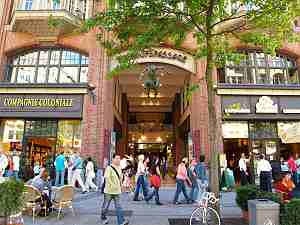
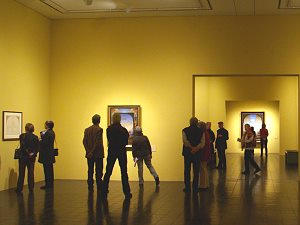




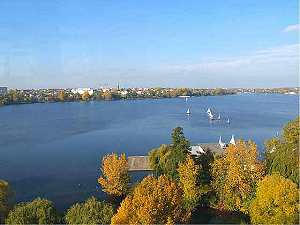

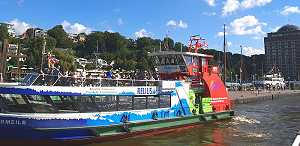


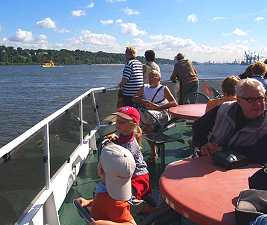
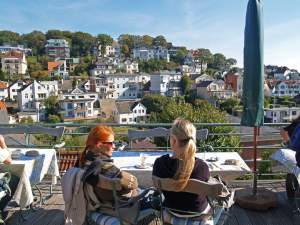



From 7 nights: 60,-€
5 - 6 nights: 69,-€
3 - 4 nights: 75,-€
Discount for solo travelers each night: 5,-€
From 2 weeks in the winter half-year special prices
possible.
Fees for 1 up to 2 nights on inquiry.
Less than 4 nights are only short-dated bookable.
All prices for each night - date: 2024/25
Bedclothes inclusive.
Final cleaning inclusive.
Towels 8,-€ per person.
Regrettably your domestic animals have to stay at home.
We also ask for your understanding, that SMOKING is not
accepted inside our holiday flat, at the terrace yes!
The day of your arrival our flat is at your command from
2:00pm, the day of your departure until 10:00am.



The location:
Centrally but quietly situated holiday home.
Residential area, no transit traffic.
All kinds of shopping facilities very near.
ALDI, MARKTKAUF, BAKERY HILLERT, BUDNIKOWSKY.
5 minutes (within walking distance) to the train
station.
By train you reach easily destinations like Hamburg & Stade.
In 15 minutes (on foot) you get to the
picturesque Old Town of Buxtehude.
A huge forest (recreation area), the "Neukloster
Forst" is situated in a distance of about 1km.
So why not leave for some big day outs by bike? As well you are
welcome to use our bicycles for free!





Living Room
Bedroom
(2 beds or double bed)
Dining Room
*
Kitchen
(separate)
Bathroom
(tub + shower)
Terrace
Storage
(external)




Furthermore:
Electric
iron,
ironing-board,
clock,
hairdryer,
portable
radio,
coffee
maker,
electric
kettle,
toaster & egg boiler.





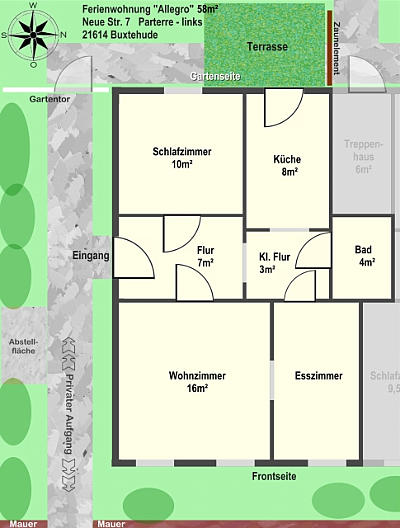



| Ausgewiesene Marken gehören ihren jeweiligen Eigentümern |
| Copyright © 2005-2026 Antje Schmidt | |
Webdesign Stephan Schmidt |

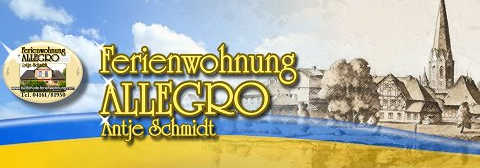




LIVE CENTRALLY - ENJOY THE AMBIENCE
You
are
searching
for
a
quite
nice
vacation
rental
for
1
or
2
persons?
Therefore
we
can
offer
you
our
affectionately
renovated
old
house
holiday home!
About
58
sqm
(630
sq.
ft.)
wide
with
a
living
room,
a
dining
room,
a
bedroom,
a
separate
completely
equipped
fitted
kitchen
with
washing
machine*
plus
laundry
dryer
(common),
micro-wave,
and
of
course
a
nice
bathroom with tub & shower.
*(for a small fee)
In
addition
a
small
terrace
with
garden
furniture
and
a
marvellous view at the garden.

Furthermore:
Electric
iron,
ironing-board,
clock,
hairdryer,
portable
radio,
coffee
maker,
electric
kettle,
toaster & egg boiler.



Antje Schmidt
Neue Straße 7
D - 21614 Buxtehude
Tel.: +49 4161/ 81950
mobile: +49 15140342939
Email: antje-schmidt-bux@web.de
Homepage: https://www.buxtehude-ferienwohnung.com


A
digital
satellite-TV-set
(Big
38
inch
Flat
screen),
W-LAN
internet
connection
and
a
nice
little
hi-fi-system
(cd,
tuner,
cassette)
are
placed
at
your
disposal.
For
your
bicycles
we
may offer you your own external storage room.
Separate Entrance - Ground Floor


Distances:
Shopping facilities:
Train station/ Subway:
Restaurants:
Altes Land (Old Land):
Elberiver:
Ferry boat:
Stade:
Airport Hamburg:
Hamburg (City):
Lüneburg:
Cuxhaven:
0,5 km
0,8 km
1,0 km
2,0 km
10,0 km
10,0 km
21,0 km
35,0 km
37,0 km
60,0 km
90,0 km
<<<
<<<
<<<
<<<
<<<
<<<
<<<
<<<
<<<
<<<
<<<

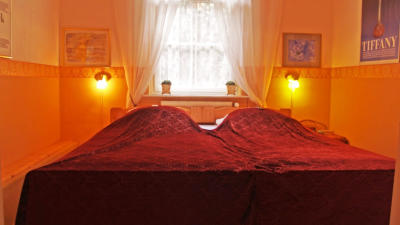
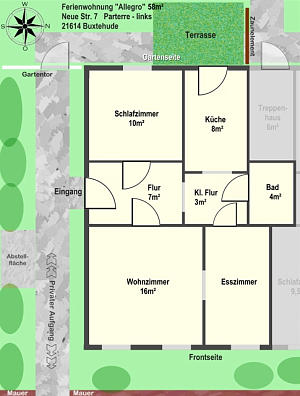
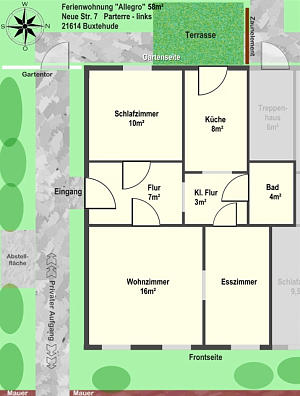
Buxtehude - Hanseatic city,
adorable and cheerful!

Buxtehude
offers
you
comprehensive
possibilities
for
your
recreational
activities:
For
example
trips
to
the
historic
old
towns
of
Buxtehude
or
Stade,
to
the
"Old
Land"
(Altes
Land),
through
the
valley
of
the
river
Este
(Estetal)
and
to
the
famous"
Heath
lands
of
Luneburg"
(Lüneburger
Heide).
Or
what
about
to
make
sometime
an
excursion
by
ferry
boat
at
the
Elbe
to
Blankenese,
to
the
famous
fish
market
(Fischmarkt)
or
to
the
St.
Pauli
landing
stages
in
Hamburg
(St. Pauli Landungsbrücken)?
The central area of Buxtehude
38,500
people
live
today
in
the
central
area
of
Buxtehude,
before
the
gates
of
Hamburg
and
on
the
outskirts
of
Altes
Land
with
its
beautiful,
blossoming
fruit
trees.
The
historical
old-
town
center
with
its
pedestrian
shopping
zone,
canal
facility,
moat,
Marschtor
military
lookout
post
and
beautiful
town
houses
is
a
special
attraction
for
visitors
from
far
and
near.
The
St.
Petri
Church
is
the
most
important
old-
style
building;
a
t
h
r
e
e
-
s
t
o
r
e
d
,
gothic,
redbrick
basilica
built
around
1300
A.D.
Street
festivals
are
held
often
and
celebrated
with
great
enthusiasm
in
these
charming
surroundings.
The
“Old-Town
Festival”,
the
“Wine
Festival”
and
the
“Christmas
Market”
consistently
fill
the
streets
and
alleyways
with
merry-
makers.
Cultural
life
is
indeed
very
much
alive
in
Buxtehude.
The
“Buxtehuder
Bulle”;
one
of
the
most
respected
literature
awards
for
young
people
and
the
Buxtehude
museum
for
regional
history
and
art
provide
strong
evidence of this.
Buxtehude,
with
its
healthy
mixture
of
industry
and
commerce,
can
be
proud
of
its
economic
achievements;
internationally
renown
names
such
as:
Babcock
Materials
Handling,
Bacardi,
K.I.D.
systems,
Malteser
Kreuz
Aquavit,
NSB
Niederelbe
Shipping
Company,
National
Rejectors,
Pioneer
Hi-Bred
and
the
Unilever
subsidiary
Lever
Fabergé
are
ample
proof
of
this.
All
in
all,
well-over
15,000
people
earn
their living in Buxtehude.
Further
plus
points
for
Buxtehude
as
an
economic
base
include
its
University
of
Applied
Sciences
for
north-east
Niedersachsen
which
specializes
in
architecture,
real
estate
m
a
n
a
g
e
m
e
n
t
and
civil
engineering,
the
T
e
c
h
n
o
l
o
g
y
-
Center
which
offers
start-up
support
for
y
o
u
n
g
e
n
t
r
e
p
r
e
n
e
u
r
s
,
and
a
number
of
highly-attractive
commercial
areas
near
the
center.
The
strong
performance
of
its
retail
outlets
in
the
historical
town
center
has
turned
Buxtehude
into
a
popular
spot
for
shopping
and
tourism.





Hamburg
Hamburg
is
the
second-largest
city
in
Germany
(after
Berlin).
The city is home to approximately 1.8 million people.
Culture and contemporary life:
Hamburg
offers
more
than
40
theatres,
60
museums
and
100
music
venues
and
clubs.
In
2005,
more
than
18
million
people
visited
concerts,
e
x
h
i
b
i
t
i
o
n
s
,
t
h
e
a
t
r
e
s
,
cinemas,
museums,
and
other
performances
of
cultural
achievement.
Theatres:
The
state-owned
Deutsches
Schauspielhaus,
the
Thalia
Theater,
and
the
Kampnagel
are
well-known
theatres
in
Germany
and
abroad.
The
English
Theatre
near
U2
Mundsburg
station
was
established
in
1976
and
is
the
oldest
professional
English
speaking
theatre
in
Germany
having
exclusively English native speaking actors in its staff.
Museums:
Art
Gallery
and
Gallery
of
Contemporary
Arts
(Kunsthalle
Hamburg)
is
located
near
central
station.
In
2008
the
Internationales
Maritimes
Museum
Hamburg
opened
in
the
HafenCity
quarter.
Two
museum
ships
near
Landungsbrücken
bear
witness
to
freight
ship
(Cap
San
Diego)
and cargo sailing ship (Rickmer Rickmers) time.
Museum
BallinStadt
Emigration
City
reminds
of
the
vast
streams
of
European
people
emigrating
from
those
mass
accommodation
halls
between
1850
and
1939
to
North
and
South
America.
Those
people
from
overseas
stemming
from
emigrants may search in data banks for their ancestors.
Music:
Music
in
Hamburg
diversifies
from
classical
music
to
hip
hop,
heavy
metal,
and
p
s
y
c
h
e
d
e
l
i
c
trance music.
The
Hamburg
State
Opera
is
one
of
the
leading
German
opera
houses.
Its
orchestra
is
the
P
h
i
l
h
a
r
m
o
n
i
k
e
r
H
a
m
b
u
r
g
.
Hamburg's
other
orchestra
is
the
North
German
Radio
Symphony
Orchestra.
The
main
concert
venue
is
the
Laeiszhalle
Musikhalle
Hamburg,
pending
the
completion
of
the
Elbphilharmonie
Hamburg.
The
Laeiszhalle
is
the
home
of
the
Hamburger
Symphoniker.
Hamburg
was
one
city
to
take
part
in
the
Complaints Choir project.
Since
the
German
premiere
of
Cats
in
1985
there
are
always
a
number
of
musicals
being
played
in
the
city.
Among
them
have
been
Phantom
of
the
Opera,
The
Lion
King
or
Dirty
Dancing
(before
there
was
Dance
of
the
Vampires).
This
density,
which
is
the
highest
in
Germany,
is
partly
due
to
Germany's
major
musical
production
company
Stage
Entertainment
being
located
in
Hamburg.
One
of
the
musical
theatres
is
a
large
tent
in
the
harbour,
guests
either
arrive
by
boat or through the historic Old Elbe Tunnel.
Tourism:
Tourists
play
a
significant
role
in
the
city's
economy.
In
2007,
Hamburg
attracted
more
than
3,985,105
visitors
(+3.7%
to
2006)
with
7
,
4
0
2
,
4
2
3
o
v
e
r
n
i
g
h
t
a
c
c
o
m
m
o
d
a
t
i
o
n
s
(+3.1%).
More
than
700,000
people
from
abroad
were
visiting
for
an
average
duration
of
stay
of
2.1
days.
More
than
175,000
full-time
employees
and
a
revenue
of
€9.3
billion
make
the
tourism
industry
a
major
economic
factor
in
the
Hamburg
Metropolitan
Region.
Hamburg
has
one
of
the
fastest-growing
tourism
industries
in
Germany.
From
2001
to
2007,
the
overnight
stays
in
the
city
grew
about
55.2%
(Berlin
+52.7%,
M
e
c
k
l
e
n
b
u
r
g
-
W
e
s
t
e
r
n
P
o
m
e
r
a
n
i
a
+33%).
A
typical
Hamburg
visit
includes
a
tour
of
the
city
hall
and
the
grand
church
St.
Michaelis
(called
the
Michel),
and
visiting
the
old
warehouse
district
(Speicherstadt)
and
the
harbour
promenade
(Landungs-brücken).
Sightseeing
buses
connect
these
points
of
interest.
As
Hamburg
is
one
of
the
world's
largest
harbours
many
visitors
take
one
of
the
harbour
and/or
canal
boat
tours
(Große
Hafenrundfahrt,
Fleetfahrt)
which
start
from
the
Landungsbrücken.
Major
destinations
also include museums.
Many
visitors
take
a
walk
in
the
evening
around
the
area
of
Reeperbahn
in
the
quarter
St.
Pauli,
consi-
dered
Europe's
largest
red
light
district
and
home
of
strip
clubs,
brothels,
bars
and
nightclubs.
The
singer
and
actor
Hans
Albers
is
strongly
associated
with
St.
Pauli,
providing
in
the
1940s
the
neighbourhood's
unofficial
anthem,
"Auf
der
Reeperbahn
Nachts
um
Halb
Eins."
The
song
explains
in
a
polite
way
how
a
sailor enjoys his last day with a trollop before going aboard.








It
was
in
the
Reeperbahn
that
The
Beatles
began
their
career
with
a
48-night
residency
at
the
Indra
Club,
and
then
another
58
nights
at
the
Kaiserkeller,
in
1960,
the
Top
Ten
Club
(1961),
and
the
Star-Club
(1962).
Others
prefer
the
laidback
neighbourhood
Schanze
with
its
street
cafés
or
a
barbecue
on
one
of
the
beaches
along
the
river
Elbe.
H
a
m
b
u
r
g
'
s
famous
zoo,
the
T
i
e
r
p
a
r
k
Hagenbeck,
was
founded
in
1907
by
Carl
Hagenbeck
as
the
first
zoo
with
moated,
bar
less
enclosures.
People
may
visit
Hamburg
because
of
a
specific
interest,
notably
one
of
the
musicals,
a
sports
event,
a
congress
or
fair.
In
2005
the
average
visitor
spent
two
nights
in
Hamburg.
The
majority
of
visitors
come
from
Germany
(80%);
most
foreigners
are
E
u
r
o
p
e
a
n
,
especially
from
the
United
Kingdom
and
Switzerland,
and
the
largest
group
from
outside
Europe comes from the United States.
Festivals and regular events:
Hamburg
is
noted
for
several
festivals
and
regular
events.
Some
of
them
are
street
festivals,
such
as
the
gay
pride
Christopher
Street
Day
festival
or
the
Alster
fair,
held
at
the
B
i
n
n
e
n
a
l
s
t
e
r
.
The
Hamburger
Dom
is
a
n
o
r
t
h
e
r
n
G
e
r
m
a
n
y
'
s
biggest
fun
fair
held
three
times
a
year.
H
a
f
e
n
g
e
b
u
r
t
s
t
a
g
is
a
funfair
to
honour
the
birthday
of
the
port
of
Hamburg
with
a
party
and
a
ship
parade.
The
biker's
divine
service
in
Saint
Michael's
Church
attracts
tens
of
thousands
biker.
Christmas
markets
in
December
were
held
among
other
locations
at
the
Hamburg
Rathaus
square.
For
art
and
culture
the
long
night
of
museums
offers
one
entrance
fee
for
about
40
museums
until
midnight.
In
2008
the
6th
festival
of
cultures
was
held
in
September,
to
celebrate
the
multi
cultural
life.
The
Filmfest
Hamburg—a
film
festival
originated
from
the
1950s
film
days
(German:
Film
Tage)
and
others—presents
a
wide
range
of
films.
The
Hamburg
Messe
and
Congress
offers
a
location
for
several
trade
fairs,
such
hanseboot,
an
international
boat
show,
or
Du
und
deine
Welt,
a
large
consumer
exhibition.
Regular
sports
events—some
open
to
pro
and
amateur
participants—are
the
cycling
competition
Vattenfall
Cyclassics,
Hamburg
Marathon,
the
biggest
marathon
in
Germany
after
Berlin,
the
tennis
tournament
Hamburg
Masters
and
equestrian
events
like
Deutsches Derby.
Architecture:
Hamburg
has
architecturally
significant
buildings
in
a
wide
range
of
styles.
There
are
only
a
few
skyscrapers.
Churches
like
St.
Nicholas's
church,
the
world
tallest
building
in
the
19th
century,
are
important
landmarks.
The
skyline
of
Hamburg
features
the
high
spires
of
the
principal
churches
(Hauptkirchen)
Saint
Michael's
Church
(nicknamed
“Michel"),
Saint
Peter's
Church,
Saint
James's
Church
and
Saint
Catherine's Church covered with copper plates.
The
many
canals
in
Hamburg
are
crossed
by
over
2300
bridges,
more
than
those
of
Amsterdam
and
Venice
c
o
m
b
i
n
e
d
.
Hamburg
has
more
bridges
inside
its
city
limits
than
any
other
city
in
the
world.
The
Köhlbrandbrücke,
Freihafen
Elbbrücken,
and
Lombards-brücke
and
Kennedybrücke
dividing
Binnenalster
from
Aussenalster
are
important traffic structures.
The
town
hall
is
a
richly
decorated
Neo-Renaissance
building
finished
in
1897.
The
tower
is
112
metres
(367
ft.)
high.
Its
facade,
111
m
(364
ft.)
long,
depicts
the
emperors
of
the
Holy
Roman
Empire,
since
Hamburg
was,
as
a
Free
Imperial
City,
only
under
the
sovereignty
of
the
emperor.
The
Chilehaus,
a
brick
stone
office
building
built
in
1922
and
designed
by
architect
Fritz
Höger
is
spectacularly
shaped
like
an
ocean
liner.
To
be
completed
around
2016,
Europe's
largest
inner
city
development
as
of
2012,
the
quarter
HafenCity,
will
house
about
10,000
inhabitants
and
15,000
workers.
Its
ambitious
planning
and
architecture
(among
other
designs
by
Rem
Kolhaas
and
Renzo
Piano
will
be
realized)
are
slowly
coming
into
shape.
By
the
end
of
2016,
the
Elbe
Philharmonic
Hall
(Elbphilharmonie)
was
scheduled
to
house
its
first
concerts
in
a
spectacular
building
designed
by
the
Swiss
firm
Herzog
&
de
Meuron
on
top
of
an
old
warehouse.
The
many
parks
of
Hamburg
are
distributed
over
the
whole
city,
which
makes
Hamburg
a
very
green
city.
The
biggest
parks
are
the
Stadtpark,
the
Ohlsdorf
Cemetery
and
Planten
un
Blomen.
The
Stadtpark,
Hamburg's
"Central
Park",
has
a
great
lawn
and
a
huge
water
tower,
which
houses
one
of
Europe's
biggest
Planetariums.
The
park
and
its
buildings
were
also
designed by Fritz Schumacher in the 1910s.
Climate:
The
warmest
months
in
Hamburg
are
June,
July,
and
August,
with
mean
temperatures
of
19.9
to
22.2
°C
(67.8
to
72.0
°F).
The
coldest
are
December,
January,
and
February,
with
mean
temperatures of -1.4 to 0.0 °C (29.5 to 32 °F).
Textquellen:
u.a.
aus
Wikipedia.
Wikipedia®
ist
eine
eingetragene
Marke
der
Wikimedia
Foundation
Inc.
http://de.wikipedia.org
|
Stadtinformation
der
Stadt
Buxtehude
http://www.buxtehude.de
/ Alle Rechte der Herausgeber vorbehalten.


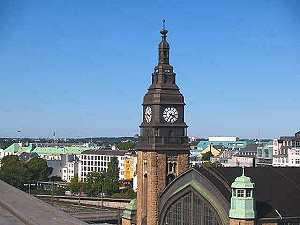




Living Room
Bedroom
(2 beds or double bed)
Dining Room
*
Kitchen
(separate)
Bathroom
(tub + shower)
Terrace
Storage
(external)












From 7 nights: 60,-€
5 - 6 nights: 69,-€
3 - 4 nights: 75,-€
Discount for solo travelers each night: 5,-€
From 2 weeks in the winter half-year special prices
possible.
Fees for 1 up to 2 nights on inquiry.
Less than 4 nights are only short-dated bookable.
All prices for each night - date: 2024/25
Bedclothes inclusive.
Final cleaning inclusive.
Towels 8,-€ per person.
Regrettably your domestic animals have to stay at home.
We also ask for your understanding, that SMOKING is not
accepted inside our holiday flat, at the terrace yes!
The day of your arrival our flat is at your command from
2:00pm, the day of your departure until 10:00am.
The location:
Centrally but quietly situated holiday home.
Residential area, no transit traffic.
All kinds of shopping facilities very near.
ALDI, MARKTKAUF, BAKERY HILLERT, BUDNIKOWSKY.
5 minutes (within walking distance) to the train
station.
By train you reach easily destinations like Hamburg & Stade.
In 15 minutes (on foot) you get to the
picturesque Old Town of Buxtehude.
A huge forest (recreation area), the "Neukloster
Forst" is situated in a distance of about 1km.
So why not leave for some big day outs by bike? As well you are
welcome to use our bicycles for free!










































